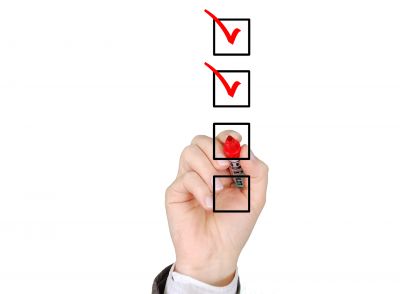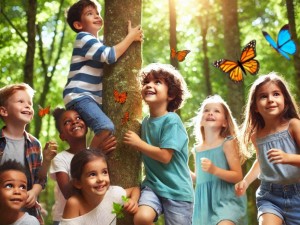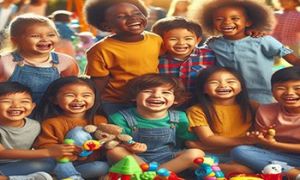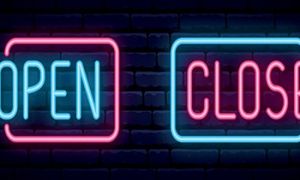The National Quality Standard (NQS) sets a national benchmark for the quality of education and care services and includes seven quality areas that are important to outcomes for children.
In each quality area, there are two or three standards. These standards are high-level outcome statements. Under each standard are elements that describe the outcomes that contribute to the standard being achieved. Each standard and element is represented by concepts that support education and care services to navigate and reflect on the NQS.
Under each standard sit elements that describe the outcomes that contribute to the standard being achieved.
The following is a quick reference guide for educators that lists the standards and elements that apply to each quality area (as of 01 Feb 2018).
QA 1 - Educational Program and Practice
- 1.1 - The educational program enhances each child’s learning and development.
- 1.2 - Educators facilitate and extend each child’s learning and development.
- 1.3 - Educators and co-ordinators take a planned and reflective approach to implementing the program for each child.
QA 2 - Children's Health and Safety
- 2.1 - Each child’s health and physical activity is supported and promoted.
2.2 - Each child is protected.
QA 3 - Physical Environment
- 3.1 The design of the facilities is appropriate for the operation of a service.
- 3.2 Use The service environment is inclusive, promotes competence and supports exploration and play-based learning.
QA 4 - Staffing Arrangements
- 4.1 Staffing arrangements enhance children's learning and development.
- 4.2 Management, educators and staff are collaborative, respectful and ethical.
QA 5 - Relationships with Children
- 5.1 Respectful and equitable relationships are maintained with each child.
- 5.2 Each child is supported to build and maintain sensitive and responsive relationships.
QA 6 - Collaborative Partnerships with Families and Communities
- 6.1 - Respectful relationships with families are developed and maintained and families are supported in their parenting role.
- 6.2 - Collaborative partnerships enhance children’s inclusion, learning and wellbeing.
QA 7 - Governance and Leadership
- 7.1 - Governance supports the operation of a quality service.
7.2 - Effective leadership builds and promotes a positive organisational culture and professional learning community.
Reference:
New Guide To The National Quality Standards







 Here is the list of the EYLF Learning Outcomes that you can use as a guide or reference for your documentation and planning. The EYLF
Here is the list of the EYLF Learning Outcomes that you can use as a guide or reference for your documentation and planning. The EYLF The EYLF is a guide which consists of Principles, Practices and 5 main Learning Outcomes along with each of their sub outcomes, based on identity,
The EYLF is a guide which consists of Principles, Practices and 5 main Learning Outcomes along with each of their sub outcomes, based on identity, This is a guide on How to Write a Learning Story. It provides information on What Is A Learning Story, Writing A Learning Story, Sample
This is a guide on How to Write a Learning Story. It provides information on What Is A Learning Story, Writing A Learning Story, Sample One of the most important types of documentation methods that educators needs to be familiar with are “observations”. Observations are crucial for all early childhood
One of the most important types of documentation methods that educators needs to be familiar with are “observations”. Observations are crucial for all early childhood To support children achieve learning outcomes from the EYLF Framework, the following list gives educators examples of how to promote children's learning in each individual
To support children achieve learning outcomes from the EYLF Framework, the following list gives educators examples of how to promote children's learning in each individual Reflective practice is learning from everyday situations and issues and concerns that arise which form part of our daily routine while working in an early
Reflective practice is learning from everyday situations and issues and concerns that arise which form part of our daily routine while working in an early Within Australia, Programming and Planning is reflected and supported by the Early Years Learning Framework. Educators within early childhood settings, use the EYLF to guide
Within Australia, Programming and Planning is reflected and supported by the Early Years Learning Framework. Educators within early childhood settings, use the EYLF to guide When observing children, it's important that we use a range of different observation methods from running records, learning stories to photographs and work samples. Using
When observing children, it's important that we use a range of different observation methods from running records, learning stories to photographs and work samples. Using This is a guide for educators on what to observe under each sub learning outcome from the EYLF Framework, when a child is engaged in
This is a guide for educators on what to observe under each sub learning outcome from the EYLF Framework, when a child is engaged in The Early Years Learning Framework describes the curriculum as “all the interactions, experiences, activities, routines and events, planned and unplanned, that occur in an environment
The Early Years Learning Framework describes the curriculum as “all the interactions, experiences, activities, routines and events, planned and unplanned, that occur in an environment


